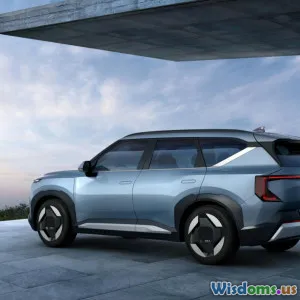
Revolutionizing Car Design with AI
6 min read Explore how AI is transforming the automotive design process, enhancing creativity and efficiency in car manufacturing. (0 Reviews)
Revolutionizing Car Design with AI
The automotive industry has always been at the forefront of technological innovation, and with the emergence of artificial intelligence (AI), we are witnessing a significant transformation in car design processes. AI is not just an add-on; it is becoming a core component that enhances creativity, efficiency, and sustainability in the design and manufacturing of vehicles. This article explores how AI is revolutionizing car design and the implications it has for the future of the automotive industry.
The Role of AI in Automotive Design
1. Enhanced Creativity and Ideation
AI tools are increasingly being used to assist designers in generating new ideas and concepts. By analyzing vast datasets of existing designs and trends, AI can suggest innovative features and solutions that human designers might overlook. For instance, generative design algorithms can create multiple design variations based on specific parameters, allowing designers to explore unconventional shapes and forms that optimize aerodynamics and aesthetics.
2. Accelerated Prototyping
Traditional car design processes can be time-consuming, often taking years from concept to production. AI-driven design software allows for rapid prototyping, where virtual models can be created and tested in a digital environment. Technologies like 3D printing can be integrated with AI algorithms to quickly produce prototypes, enabling designers to iterate on their ideas faster than ever before. This not only reduces time to market but also lowers costs associated with physical prototyping.
3. Data-Driven Decision Making
AI can analyze consumer preferences, market trends, and performance data to inform design decisions. By leveraging machine learning algorithms, automotive designers can predict which features will resonate with consumers and adjust their designs accordingly. For example, if data shows a rising demand for electric vehicles with enhanced battery life, designers can prioritize features that support these requirements, thus aligning their designs with market needs.
4. Sustainable Design Practices
With increasing awareness of environmental impacts, the automotive industry is under pressure to adopt more sustainable practices. AI can optimize the design process to minimize waste and improve resource efficiency. For instance, AI algorithms can analyze the materials used in a car's construction and suggest alternatives that are more sustainable without compromising quality or performance. Additionally, AI can simulate the entire lifecycle of a vehicle to assess its environmental impact, further guiding sustainable design choices.
5. Personalized Customer Experiences
AI is enhancing the customer experience by enabling more personalized vehicle designs. By analyzing individual consumer data, manufacturers can offer customized features that cater to specific preferences. For instance, AI can assist in creating personalized interface designs for infotainment systems based on user behavior, ensuring that drivers have an intuitive and enjoyable experience.
Case Studies of AI in Automotive Design
Several automakers are already harnessing AI in their design processes:
- BMW: The company uses AI to streamline its design workflow, allowing engineers to visualize complex design elements and predict performance outcomes.
- Ford: Ford has implemented AI algorithms to analyze consumer feedback and adjust its design strategies, focusing on features that enhance user satisfaction.
- Toyota: The automaker employs AI to enhance safety features, analyzing crash data to inform design decisions that improve vehicle safety.
Challenges and Considerations
While the benefits of AI in car design are substantial, there are challenges that the industry must address. Data privacy is a significant concern, as manufacturers must ensure that consumer data is used ethically and responsibly. Additionally, there is a need for skilled professionals who can bridge the gap between traditional design methods and AI-driven processes.
Conclusion
AI is not just a technological fad; it is revolutionizing the way cars are designed and manufactured. By enhancing creativity, accelerating prototyping, enabling data-driven decision-making, promoting sustainability, and personalizing customer experiences, AI is setting a new standard in automotive design. As the industry continues to evolve, embracing AI will be crucial for manufacturers looking to stay competitive and meet the demands of modern consumers. The future of car design is not just about making vehicles; it's about creating intelligent, adaptive, and sustainable solutions for mobility.
Rate the Post
User Reviews
Popular Posts





















